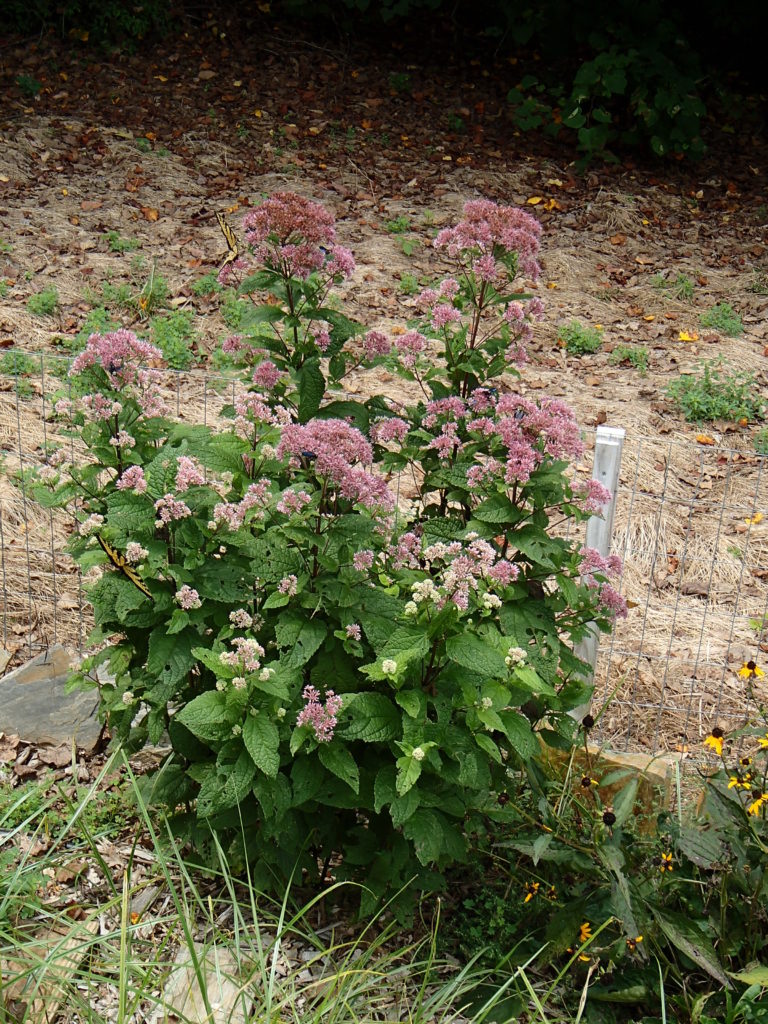Coastal Plain or Dwarf Joe Pye, E. dubium, is a tough, rewarding late-season herbaceous perennial whose family must be represented in the native garden. It is very handsome, the fragrant mauve to pink flowers appearing in cone-shaped clusters on red stems in late summer and lasting through fall, similar in many ways to its famous taller cousin, Eutrochium fistulosum (Joe Pye Weed, up to 8′ tall). It’s most outstanding garden quality, though, which it shares with its botanical cousins, is its ability to attract amazing numbers of butterflies, especially Swallowtails and Monarchs, during its long flowering from July to September. It grows well in moist, sandy soil with lots of sun but will still flower in shadier areas.
Like so many of our favorite garden plants, the species E. dubium is found in nature in wetlands, ranging from coastal Maine south to South Carolina. It grows 3-5 feet tall x 2-4 feet wide. The cultivar ‘Little Joe’ (which is a patented plant) is said to grow 3-4 feet tall by 1-3 feet wide. In our experience, height is rather variable with both species and cultivar, depending on light and moisture. ‘Little Joe’ is also marketed on the basis of a more compact growth habit, greater tolerance for dry soil and resistance to powdery mildew. Either one, E. dubium species or ‘Little Joe’, allows folks with limited garden space, who are intimidated by the height of the full-sized Joe Pye Weed (E. fistulosum), to support and enjoy the great pollinators down at the height where people can better appreciate them. Dwarf Joe Pye plants combine well with ironweed, goldenrods and native asters. Since cultivars don’t have a natural distribution, the USDA plant distribution map linked below is for the species.

